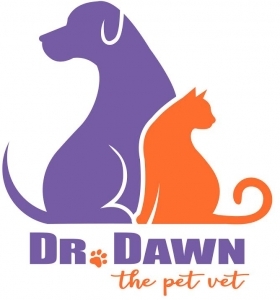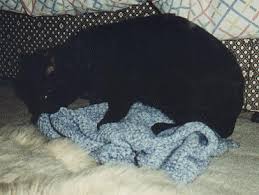Certain pedigree Oriental cat breeds are more prone to eating fabric. Siamese, Burmese, and some others breeds are susceptible to developing an usual form of pica, the eating of non-nutritive substances. For reasons we do not yet understand, some house cats develop the habit of chewing unusual items, such as elastic bands and rubber gloves. A significant proportion of Oriental cats not only chew but also eat fabrics. Their fabric of choice is usually wool, closely followed by cotton. Synthetic fabrics such as nylon and polyester are less popular. Most of these cats start by chewing woolen items. Many then progress to swallowing the chewed-off fabric chunks, or move on to other materials. In these cases, the cats appear to confuse fabrics with food.
There are reports of a Siamese cat dragging an old sock up to its food bowl, and then alternately taking one mouthful of one, and one mouthful of the other. We also have yet to understand their predilection for wool over other fabrics. One theory held that these cats might have a craving for the natural lanolin in wool, but when tested by feline behaviorists, they were unable to prove it.
 Because wool eating is largely restricted to a small number of closely related breeds, it must have a genetic basis. However, it does not seem to be inherited directly. There was a study done that questioned the owners of 75 kittens produced by seven mothers, three of whom were fabric eaters and four of which were not. One third of the kittens had become fabric eaters themselves – but many of these had “normal” mothers (their fathers’ habits were unknown). Neither simple genetic factors, nor imitation of the mother’s behavior, could explain why some had developed this problem while others had not.
Because wool eating is largely restricted to a small number of closely related breeds, it must have a genetic basis. However, it does not seem to be inherited directly. There was a study done that questioned the owners of 75 kittens produced by seven mothers, three of whom were fabric eaters and four of which were not. One third of the kittens had become fabric eaters themselves – but many of these had “normal” mothers (their fathers’ habits were unknown). Neither simple genetic factors, nor imitation of the mother’s behavior, could explain why some had developed this problem while others had not.
Many of the fabric eating cats also showed other types of abnormal behavior, including biting their owners an excessively scratching. This is also noted in non-pedigreed cats, and can be a sign of stress or anxiety. In the Oriental breeds, the fabric eating behavior is most often noted within a few weeks of having been relocated or adopted, and is likely related to the stress involved in that process. Yet, onset of signs is often noted around 1 year of age, without a move associated. It is presumed that this is when a cat is sexually mature and often coming into conflicts with other cats either within or outside of the home.
So, the behavior may begin as a soothing activity in times of stress, and not unlike thumb sucking in humans. Why they choose fabrics, and why that progresses to ingestion is still unclear.
Dr. Dawn
Please share and subscribe here





